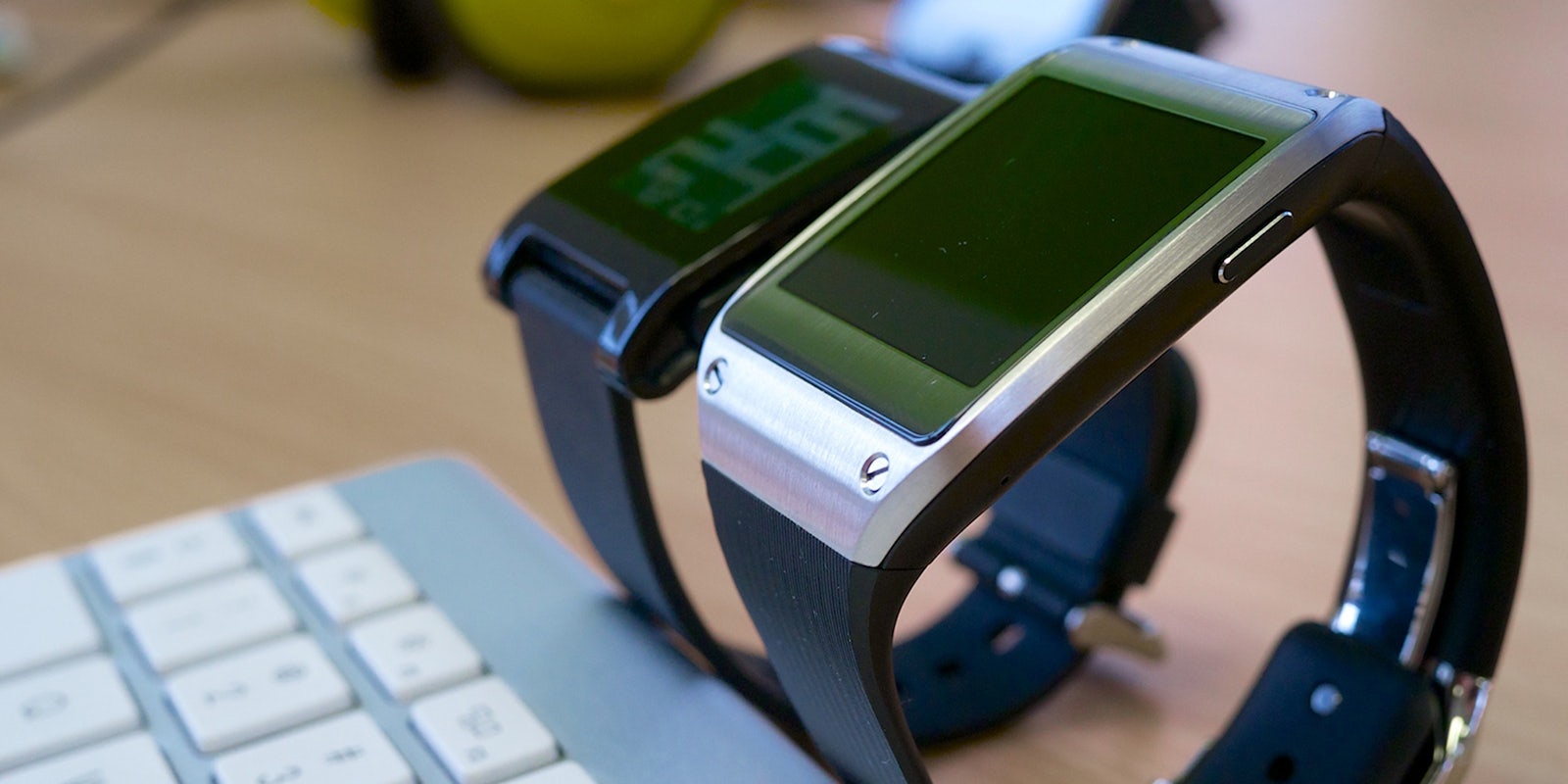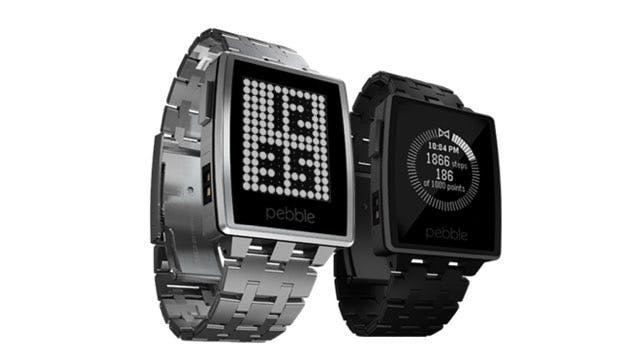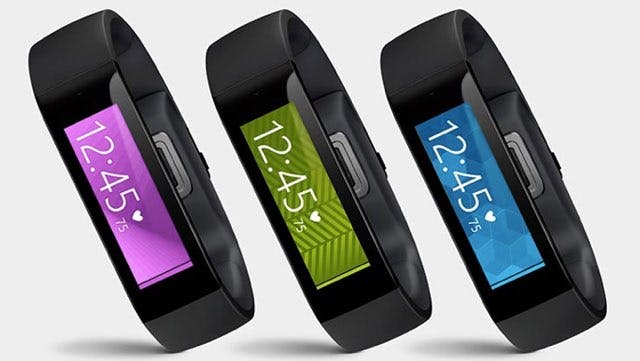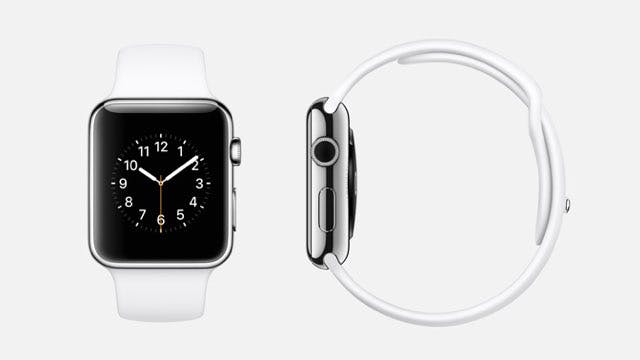2014 has been a very strange year in tech. Seemingly everyone has either a smartphone or a tablet—and in many cases both—and it’s not immediately clear what the Next Big Thing will be.
The smartwatch revolution is still in its early throws but things seem quite promising, and if you’re an early adopter there’s a great chance you’ve been eyeing the various super-watches. If you’re looking to pick one up for yourself or someone on your holiday shopping list, here are the ones you need to consider.
Moto 360
- Price: $249.99
- Platform: Android Wear
- Compatibility: Most Android devices
The Moto 360 was the first modern smartwatch to attempt the circular design, and because of that it became a hot seller right out of the gate. Unfortunately it had a rushed release and suffered some seriously negative reviews because of it. Thankfully, virtually every issue brought up during the Moto 360’s early days—battery life, clunky interface, and general glitchiness—have improved dramatically.
The Moto 360 runs on Android Wear, and as such it’s compatible with any Android device capable of running the required Wear app, and that’s pretty much all of them. It has a built-in optical heart rate monitor which, in my own personal usage, appears to be pretty much spot-on. It’s a solid, capable wearable that will likely get even better as Android Wear is expanded to include more functionality.
Pebble
- Price: $99 ($199 for Pebble Steel)
- Platform: Pebble OS (custom)
- Compatibility: Android, iOS
Yes, the smartwatch that started the current craze remains one of the best options thanks to a bustling developer community, ridiculously great seven-day battery life, and excellent compatibility with both iPhone and Android devices. Upon its release there wasn’t much to-do with the Pebble, but since then its gained app functionality from Runkeeper, the Weather Channel, GoPro, and countless other popular pieces of smartphone software.
Perhaps the biggest selling point of the Pebble is its price: You can pick the original model up for just $99, though the more hardy Pebble Steel will set you back a more considerable $199. Still, it’s a great value and Pebble has proven to be a platform with some serious staying power.
LG G Watch R
- Price: $299
- Platform: Android Wear
- Compatibility: Most Android devices
If you’d prefer your smartwatch to look more like a traditional timepiece than some prototype cooked up in a tech lab you’ll probably dig the LG G Watch R. At first glance you might not even realize it’s a smartwatch, but it runs the Android Wear operating system and in general is quite similar in functionality to the Moto 360.
However, it sets itself apart in a few key areas including even more impressive battery life than Motorola’s offering, an always-on display, and a perfectly circular screen—the Moto 360’s has a small black slice taken out at the bottom. Its sportwatch design cues won’t please everyone, and for those people Motorola’s watch is probably a better fit, but it’s definitely one of the most solid all-around entries into the smartwatch space.
Microsoft Band
- Price: $199
- Platform: Custom
- Compatibility: iOS, Android, Windows Phone
I’ll admit that at the beginning of 2014, I would have never guessed I’d wrap the year up by recommending a Microsoft wearable. But here we are! The Microsoft Band is a smartwatch/fitness band hybrid that pushes the company’s Microsoft Health platform with an always-on heart rate monitor and nine other sensors, as well as support for third-party apps, email, and notifications.
The Band is priced right, works with all three of the major smartphone platforms, and comes in three different sizes. The interface adopts the familiar “tile” design from Windows 8 and Windows Phone and arranges them on a thin, high-res display. It tracks your sleep, delivers your email, keeps track of your gym workouts, and lets you order a Starbucks coffee without opening your wallet. Need I say more?
Apple Watch
- Price: $349 (and up)
- Platform: Watch OS (Apple custom)
- Compatibility: iOS
OK, I know what you’re thinking, and you’re right: The Apple Watch won’t be here by year’s end and may not even be here in time for the flowers blooming in spring of 2015, but it will launch sometime in the first half of next year and if you or yours are an Apple die-hard, it may be worth simply waiting.
As we saw in Apple’s much-hyped debut event for its new wearable, the Apple Watch does things a lot differently than the competition. It utilizes a small dial on the side called the digital crown, a pressure-sensitive touchscreen, and a dedicated social button, amongst other exclusive features. It’s a very “Apple” approach to a wearable in that it builds on established ideas while also pulling new ones out of thin air, and there’s a good chance it will change how you think about smartwatches in the same way the iPhone revolutionized smartphones. That being said, it’s not here yet, and if you have money burning a hole in your pocket you can always change teams later on if the need arises.
The unmentionables
Let me take a second to explain why some specific smartwatches aren’t on this list, lest you think I simply forgot about them:
Sony Smartwatch 3 – A great Android Wear wearable from early accounts, but Sony’s previous offerings in the category have suffered in the long run with shoddy software support and questionable build quality. You don’t need to search far to find reports of Sony’s previous smartwatches disintegrating after a few months, and that’s not something you want to invest in. It might be a great device with great long-term quality, but it’s impossible to know yet.
Samsung Gear/Galaxy Gear/Gear Fit/Gear Live/Gear 2/Gear S – Samsung loves to throw things at the wall to see what sticks, and so far none of its smartwatches have lived up to their billing. Oh, and Samsung has a nasty habit of making its devices compatible with only its own smartphones exclusively, and not even just its own phones, but its own just-released phones (meaning no one has one yet).
Will.i.am’s PULS – You’re joking, right? Stop, I can’t take anymore. You’re killing me here.
Photo via K?rlis Dambr?ns/Flickr (CC BY 2.0)







